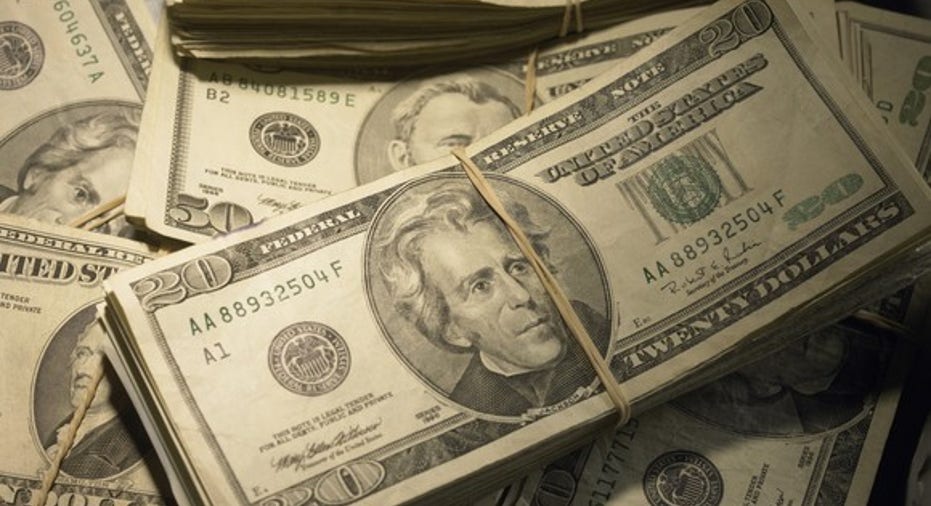Why the Take Rate Is So Important in E-Commerce

Long before e-commerce began, intermediaries have charged money to link buyers and sellers of goods and services. For e-commerce businesses such as Amazon.com (NASDAQ: AMZN), eBay (NASDAQ: EBAY), and PayPal (NASDAQ: PYPL), the take rate refers to the percentage of the value of the transactions they facilitate that they get to keep as revenue. How much an e-commerce company is able to charge as a take rate depends on the strength of its underlying network of users and the degree of competition within the industry. As Amazon, eBay, and PayPal have found, building up an internal ecosystem to keep users within reach can be a key driver in keeping take rates up and boosting profits as much as possible.
Image source: Getty Images.
What take rates look like in online marketplaces
For online marketplaces like what Amazon and eBay offer, the take rate refers to the fees and commissions that the companies collect on sales by third-party sellers. For eBay, those fees typically take the form of initial listing fees for offering goods and services on its marketplace in the first place, as well as final value fees that the e-commerce specialist collects after a successful sale.
The key issue with take rate in online marketplaces is the tug-of-war between maximizing profit and keeping customers within the network. eBay has traditionally sought to move its take rate higher, boosting final value fees and taking a bigger piece of its sellers' sales. Yet as it has done so, eBay has opened the door to competing marketplace services, and the rise of companies like Etsy has shown that raising take rates too high can enable competitors to undercut based on price and lure cost-sensitive users away.
In assessing the health of Amazon, eBay, and other marketplaces, it's valuable to look at gross merchandise volume and segment profitability. Volume growth is important to ensure that the network is healthy, but the ratio of profits to volume is directly proportional to the take rate, and growth in profits is necessary to show that the company is finding the optimal take rate to balance income and revenue.
What take rates look like for payment networks
Meanwhile, the take rate concept is similar for payment services providers like PayPal. Payment services providers typically take a percentage of every transaction in exchange for facilitating the movement of funds from the buyer to the seller. For instance, if a buyer spends $100 on a product, a payment services company might pay the seller $97, keeping the remaining $3 as a fee. This would work out to a take rate of 3%.
As with online marketplaces, competitive pressures define how payment providers can optimize take rates. PayPal's net take rate actually depends significantly on the choice of funding source that customers make, because if customers use a debit or credit card, then PayPal has to bear the costs that the card network company charges. PayPal actually takes that into account with certain transactions, charging no fee on personal payments funded with existing PayPal balances or from a bank account, but charging 2.9% plus a $0.30 transaction fee if the payment is funded through a debit or credit card. However, for purchase payments, the seller pays 2.9% plus $0.30 per transaction regardless of the funding source -- meaning that PayPal gets to keep extra profit if buyers use a bank account rather than a card.
What take rates look like for website analytics
Finally, take rate has a different meaning for marketing activity, including that done through e-commerce. Take rate reflects the fact that a great deal of internet marketing happens in multiple stages, where the first goal is to get a customer to click on an ad, and the next is to convince that customer to buy a product. The take rate in this case refers to the percentage of customers who click on the ad, in contrast to the conversion rate, or percentage of customers who not only took the ad but actually bought the product.
In general, a high take rate is good, but it's essential that conversion rates be strong as well. For marketers, a high take rate and a low conversion rate can be the worst of all worlds in e-commerce. Often, marketing costs are based on the number of people clicking through, and it's then up to the company to convince those people to buy a product. By contrast, a lower take rate can be better if it doesn't hurt conversions, because it will cost less to drive the same amount of final sales.
Take rate gets used in a variety of contexts, and it's important to know what each specific instance means. In general, though, the best e-commerce companies are those that sustain high take rates while keeping competitors at bay.
10 stocks we like better than Amazon.com When investing geniuses David and Tom Gardner have a stock tip, it can pay to listen. After all, the newsletter they have run for over a decade, Motley Fool Stock Advisor, has tripled the market.*
David and Tom just revealed what they believe are the 10 best stocks for investors to buy right now... and Amazon.com wasn't one of them! That's right -- they think these 10 stocks are even better buys.
Click here to learn about these picks!
*Stock Advisor returns as of January 4, 2017
Dan Caplinger has no position in any stocks mentioned. The Motley Fool owns shares of and recommends Amazon.com, eBay, and PayPal Holdings. The Motley Fool has a disclosure policy.